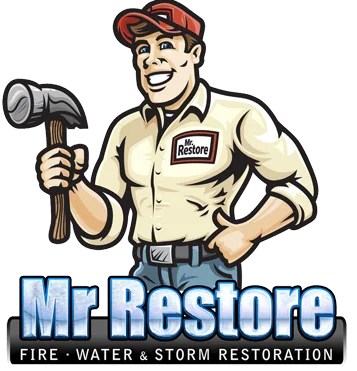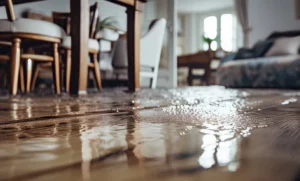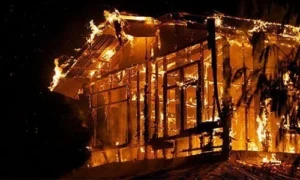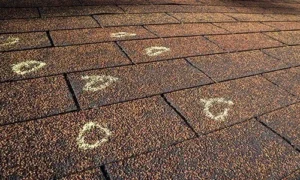If your house gets affected by flood water, it can be a disturbing experience for you to come across. When surrounded by this problem, it’s best to take appropriate measures without any delay in order to prevent further damage. The first thing you’re told to do is to cut off the power supply to reduce the risk of electrocution. But what’s next? Once you’ve cut down the power supply, you’ll be left with puddles of water in your basement and maybe in other rooms as well. Instead of sitting back and staring at the stagnant water, you must consider doing water damage repair. You won’t be able to deal with the flood damage in Dallas, TX, on your own. You will need some professional assistance. That’s when you must call in professional water damage restoration services. Flood damage in Dallas, TX, is a serious thing to consider, which mustn’t be taken lightly. Any delay in contacting water damage restoration services and you’ll start experiencing severe problems pretty soon, for example, mold growth. It only takes mold about 24 hours to develop. This means you don’t have enough time. This article explains to you what necessary steps must be taken to deal with flood damage in Dallas, TX. In fact, the following tips would help you take care of a few things on your own until a water damage restoration service arrives for your rescue.
1. Knowing When to Call for Help
There are three types of water that can cause you problems at home. The first type is water from heavy rainfall. It’s clean, so you don’t have to worry about it. You can even clean it on your own if you want. The second type is usually referred to as gray water. This is dirty water that sometimes leaks from dishwashers, toilets, and washing machines. The damage done by this kind of water is not that much, so you can also take care of it. But the third type is flood water which can literally ruin your house. And believe it or not, you cannot deal with it on your own even if you want to. This is when you must contact professional service at all costs.
2. Inspect the Affected Areas for Mold
Wet and moist areas are the favorite place for mold to grow. Knowing that mold is toxic to humans, you need to inspect the areas of your house affected by the flood water and see if there are signs of mold growth. It’s best if you leave this task to professional services, but in case the service you’ve called is scheduled to come in a day or two, you must cut out the material affected by mold, bag it and dispose of it before mold starts to spread all over the place. Water damage restoration services take more serious measures when it comes to controlling flood damage in Dallas, TX. Knowing that mold can grow in hidden places like underneath flooring or inside walls, these services have more effective plans to deal with mold growing in such places. That’s another reason to call in a professional water damage restoration service.
3. Removing All the Affected Porous Material
Do you know what a porous material is? Porous materials include fabric, carpet, and other similar materials. Once affected by flood water, you will have to cut these materials and dispose of them because they will either shrink after absorbing too much water or promote mold and mildew growth. Depending on the severity of flood damage in Dallas, TX, you can deal with the wet and ruined carpets on your own. Still, you’ll need the help of professional services when it comes to removing other porous materials like wooden flooring, drywall, and unsealed cement.
4. Removing and Replacing Wood
All the wooden flooring that is ruined by flood damage in Dallas, TX, needs to be replaced before it starts to rot and invites mold. This is another service that professional water damage restoration services provide. When replacing the wooden flooring, the area underneath the wooden boards must be cleaned properly before installing the new wooden boards.
5. Measuring and Replacing Drywall
Flood damage in Dallas, TX, is definitely going to leave you with wet and swelled drywall that needs to be replaced. But how do you know how much of it must be replaced? According to the water damage restoration services, if a 3/8 of an inch or more than that has been damaged, the whole sheet of drywall must be replaced. Unless you have experience in measuring and replacing drywall, you won’t be able to do this task neatly. This is something that requires professional attention, and you must leave this task to experienced water damage restoration companies.
6. Inspecting and Replacing the External Siding of Your House
If your house has been damaged due to flood water, it’s not just the stagnant water inside your house that you must deal with. The external siding of your house will need immediate inspection and replacement as well before it starts to rot. The reason why external siding needs an inspection is that water can easily seep behind the external walls of your house.
7. A Fresh Coat of Paint
After the stagnant flood water in your house has been dealt with and all the necessary replacements have been carried out, the last step would be to paint the areas affected by flood damage in Dallas, TX. You can take this opportunity to caulk all the newly installed materials in order to prevent them from damage caused by any water problems in the future. You must have noticed that when it comes to water damage restoration, there are quite a few things that you can’t do on your own. So, if you’re looking for water damage restoration services, contact Mr. Restore and leave all the complicated tasks involved in restoring a house after flood damage in Dallas, TX, to our skilled and trained servicemen.






